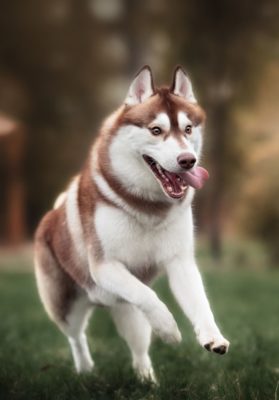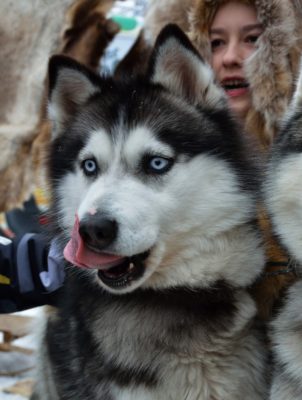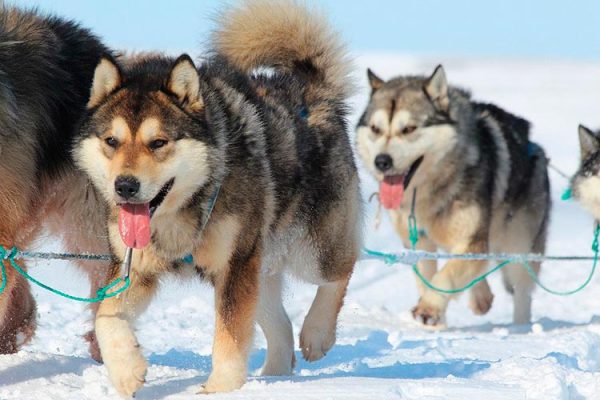Chukotka Sled Dog

Chukotka Sled Dogs are very restrained animals: they will not react violently to the arrival of their beloved master. These dogs are characterized by independence and a certain coldness. The Siberian Husky is characterized by calm behavior, friendliness, and lack of aggression. After all, it’s not for nothing that this dog is called a faithful companion.
Table of Contents
Breed Information
| Another Name | Chukchi Sled Dog, Siberian Husky |
| Origin | Russia |
| Height | Males 56-65 cm Females 53-62 cm |
| Weight | Males 25-30 kg Females 20-25 kg |
| Fur | Double, rigid, straight |
| Color | All colors except shabrack, tiger, dense speckled |
| Lifespan | 12-15 years |
| FCI Classification | Breeds outside the FCI classification |
| Group | Sled dogs, guard dogs |
| Price | $200 |
Breed Photos
Origin History
The Chukotka Sled Dog, also known as the Siberian Husky, has been used by humans since ancient times. Until the middle of the 20th century, many aboriginal groups of dogs merged into one breed, the Northeast Sled Dog. Traditionally, the Chukotka Sled Dog was used for transportation when there were no snowmobiles and automobiles yet. Over time, this form of transportation began to be phased out due to scientific and technological advances. The use of sled dogs is still relevant in the far-flung corners of Siberia.
For thousands of years, our ancestors explored both hemispheres of the Earth with dog-led dogs. It is impossible to imagine many geographical discoveries of the Arctic without the Chukotka Sled Dogs. Thanks to their endurance, willingness to work, and not to sit idle, scientific research were made. For example, the Norwegian polar explorer Roald Amundsen went on an expedition for 100 days in 1911. He chose sled dogs as his mode of transportation. Moreover, he was a month ahead of his competitor Robert Scott, who decided to get there by motor sled.
In 1993, Nikolai Nosov first formulated and published a standard for Chukotka Sled Dogs based on their observations. This breed of dog is currently used in the south of Chukotka for herding reindeer, towing boats, and transporting goods.
Appearance
The Chukotka Sled Dog is a medium-sized, strong-built dog. The dog’s musculoskeletal apparatus is well developed: it has a strong skeleton and a strong muscular frame. These characteristics allow the dog to work long and tirelessly for long distances in the sled.
The Chukotka Sled Dog has a massive head and pronounced zygomatic arches, the muzzle is sharp, and the neck is short. The eyes are yellow or brown. Huskies have a straight coat of medium length. The undercoat is very soft and fairly thick so that it stays warm even in the bitter cold. The color of the coat is very diverse: zonar-red, zonar-gray, brown, black, white. It’s very fluffy tail makes the dog sleep warm in the snow as if it covers itself from the cold.
Character
Chukotka Sled Dogs are very restrained animals: they will not react violently to the arrival of their beloved master. These dogs are characterized by independence and a certain coldness. The Siberian Husky is characterized by calm behavior, friendliness, and lack of aggression. After all, it’s not for nothing that this dog is called a faithful companion.
The Chukotka Sled Dog’s significant advantage is that it has incredible physical qualities: unpretentious to environmental conditions, hardy to the cold. The husky’s innate ability to navigate in space will not let the owner get lost during a snowstorm.
Care
Due to the Chukotka Sled Dog’s anatomy, it can live in the Far North of Russia’s subzero temperatures, so an aviary is sufficient. Undoubtedly, it will be optimal to keep huskies in a country house with a large territory and a cool climate. There the dog will be able to “run wild” and feel comfortable. If you decide to keep the dog in the apartment’s condition, you should not forget that they are lovers of work. They need to be provided with intense physical activity. You need to spend quite a lot of time with them in nature because without it; they wither before their eyes. But do not forget about leashes because the dog is independent and curious – it will carry off into the distance, with its tail up.
It is advisable to brush your dog from time to time and almost daily during shedding. You will not need to bathe it often: 1-2 times a year will be enough, or as needed.
Training
There will be no problems with a Chukotka Sled Dog’s training and education because they understand instructions well. Do not forget that the training process will be more successful if it is combined with play. An experienced owner with patience and perseverance will do well in training this breed of dog.
Common Diseases
A very strong immunity characterizes the Chukotka Sled Dog. It rarely gets sick. Natural selection and the North of Russia’s harsh climate contributed to the creation of hardy sled dogs.
Nutrition
Chukotka Sled Dogs are indiscriminate and undemanding when it comes to food. Despite this, they need a diet with a lot of protein: meat, fat, offal, sea fish. Interestingly, the husky metabolism allows them to safely tolerate several days without food with an economical expenditure of energy resources. But it is better not to neglect it, because the pet will not like it.
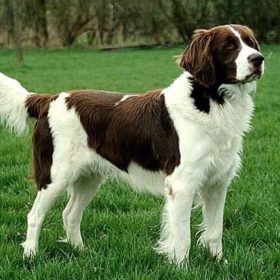 Drentse Patrijshond
Drentse Patrijshond Yakutian Laika
Yakutian Laika Irish Wolfhound
Irish Wolfhound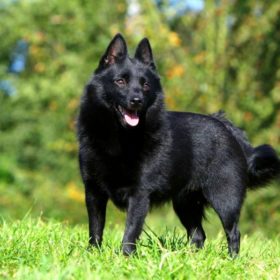 Schipperke
Schipperke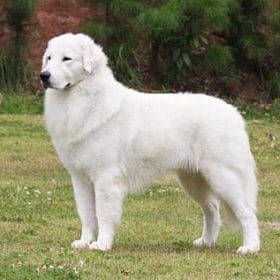 Maremmano-Abruzzese Sheepdog
Maremmano-Abruzzese Sheepdog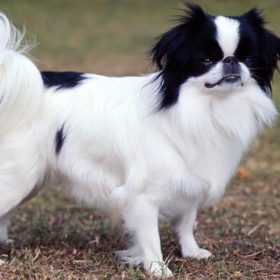 Japanese Chin
Japanese Chin